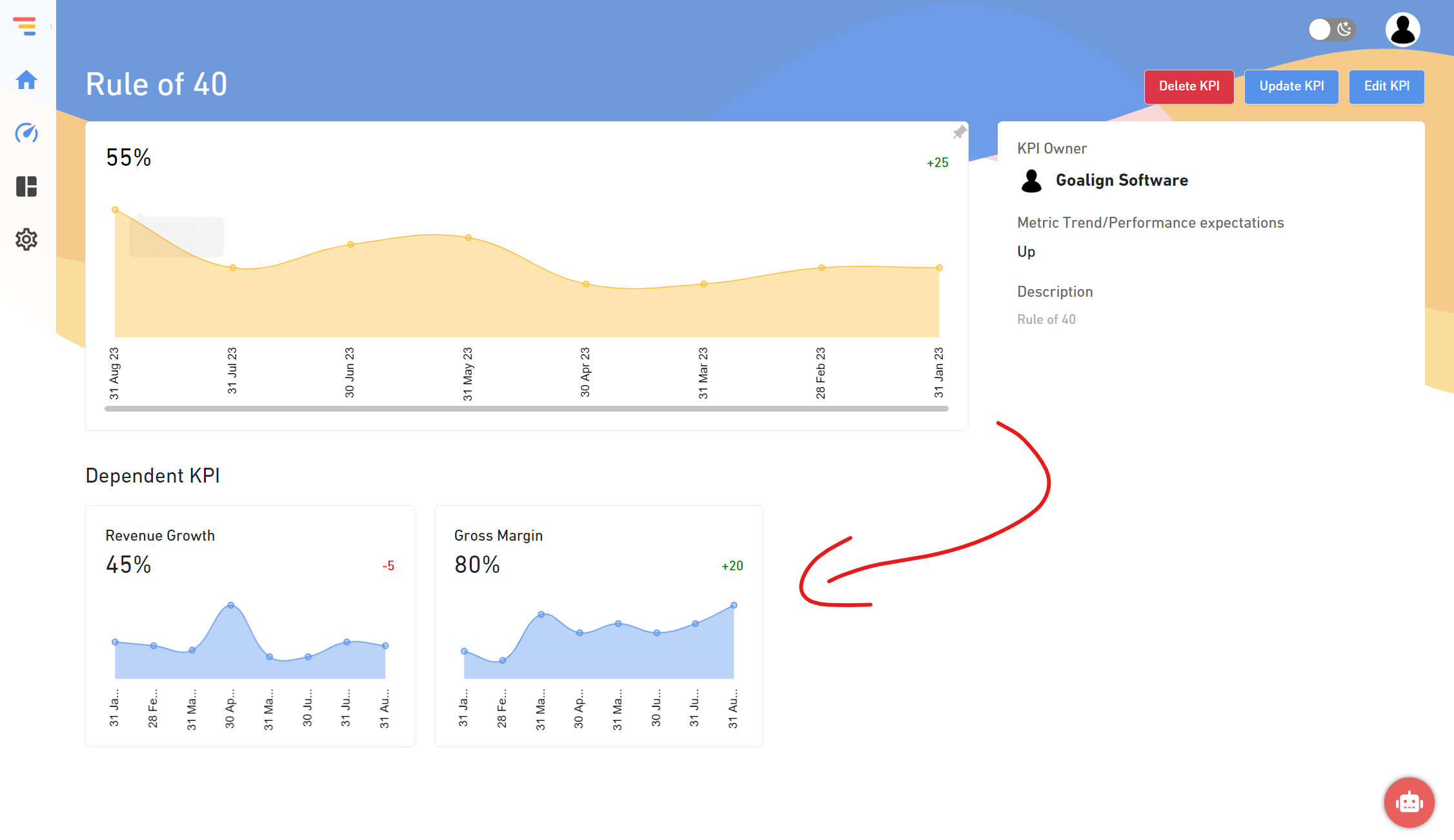Introduction:
OKR is a goal-setting process that helps you enhance performance and drive change, whereas KPIs are business measures that reflect performance. Consequently, KPIs tell you what data you’ll need to look at to lay the groundwork for your OKRs. OKRs and KPIs are both measurable and indicate the team’s success. The distinction between OKRs and KPIs is what you assess and how you collect those measurements.
Definition of OKR and KPI
What is OKR?
In basic terms, the abbreviation stands for “Objectives and Key Results.” In greater detail, an OKR may be characterized as Andrew Grove’s rigorous goal-setting and tracking system, which Intel has followed from its inception. The idea of OKR was developed by Andrew Grove based on Peter Drucker’s Management by Objectives principles. He is also known as the inventor of the OKR approach.
OKRs are a set of meaningfully articulated Objectives and Key Results that are established and tracked to improve business performance as a whole. Setting future objectives and measuring those aims using Key Results is the concept of OKR. The acronym for Objectives and Key Results (OKR) stands for Goals and Key Results. A company’s, department’s, or individual’s broad ambitions are examples of objectives. Key Results measure the achievement of the goal.
What is KPI?
A key performance indicator (KPI) is a quantifiable statistic that shows how well a firm is accomplishing essential business goals. Businesses use KPIs to assess how well they are meeting their objectives. Low-level KPIs could be concerned with processes across departments like marketing, sales, HR, or support, whereas high-level KPIs might be concerned with the organization’s overall success.
A KPI, or key performance indicator, is a quantitative value used to assess a person’s or organization’s progress in achieving a goal. You can have high-level KPIs that look at the overall performance of your company, as well as KPIs that drill down into individual or departmental activities.
OKR VS KPI
The fundamental distinction between KPIs and OKRs is the motivation behind the goal-setting process. KPIs have realistic, attainable targets based on a process or project that is already in place. OKRs, on the other hand, have more aggressive, competitive, and ambitious objectives. Because they are so lofty, OKR goals are often unattainable at first. This isn’t to say they’re impossible to achieve; it just indicates that they may take a little longer and require some changes as you work toward them. The objective of your OKRs is to motivate you and your team to achieve the most outstanding results possible, whereas KPIs are previously established, reasonable, and attainable targets.
Another distinction between KPIs and OKRs is that, while KPIs are tracked and quantifiable, you don’t have to describe the exact result you want or expect with OKRs. On the other hand, when you design your OKRs, you’re laying out precisely what you and your team want to accomplish. In the end, KPIs are measured, whereas OKRs are outcomes.
OKRs
- Goals and metrics that are action-oriented.
- Future-oriented and goal-oriented, attempting to move from point A to point B.
- Should be forceful and bold and assist in moving the needle on a critical issue for your company.
- Have a defined time frame in mind, and make adjustments as you go from quarter to quarter or year to year.
OKR Examples
OKRs are more detailed and ambitious than KPIs, and they may be applied to the entire business, a single person, or specific projects.
Example 1:
Key Result 1: Increase your social media presence by publishing at least 1-2 times each day on all platforms.
Key Result 2: Follow influencers with at least 5,000 followers and comment on the top 10 most popular posts across several platforms.
Example 2:
Key Result 1: Acquiring 20 new customers is the first key result.
Key Result 2: Increase marketing leads by 10% as a secondary goal.
KPIs
- Key Performance Indicator (KPI) is an abbreviation that stands for Key Performance Indicator.
- Numbers that indicate how well your company is doing.
- It might be a result of a forerunner.
- Monitors the “steady-state” and offers benchmarks; should trigger actions if the statistics deviate from expectations.
- Many of the same KPIs may be assessed ongoing from quarter to quarter and year to year, but the objectives may change.
KPI Examples
KPIs examine achievement metrics for the company, people, specific projects, and other divisions to determine the organization’s performance. This metric is used to evaluate the firm’s performance and its efforts.
- HR Department: Attracting talent, hiring rate, employee retention, employee satisfaction, incidents and issues all contributed to an increase in training and development uptake.
- Marketing Department: Traffic, cost per lead, conversion rate, content creation, content quality, clicks, cost per phone call, and time on site are all metrics that the marketing department keeps track of.
- Technology Department: Monthly recurring income, client retention, customer churn, ticket response time, and necessary escalations are all things that the IT department is concerned with.
What do KPIs and OKRs have in Common?
- Both should be detailed, quantifiable, and easy to understand. Every important outcome and performance indicator should be evaluated utilizing the Red-Yellow-Green success criterion.
- It would be best to concentrate on only a few of each that are genuinely crucial. Both acronyms contain the letter K for key, implying that you must make decisions to focus on the essential things. You should have 3-5 critical outcomes and no more than 8-12 KPIs at any one moment.
- OKRs and KPIs can be set for the entire organization, individual departments or teams, or specific roles, persons, or projects.
- Both may assist you in running your organization by bringing everyone together around well-defined goals and measurable outcomes.
- They can be established for an individual or a group, but even group ones require an owner responsible for the outcomes.
Is it possible to combine KPIs with OKRs?
OKRs and KPIs complement one other wonderfully. OKRs help solves issues, enhance processes, and promote innovation. KPIs assist monitor performance and highlighting problems and opportunities for development. You’ll need both, so tracking them alongside each other not only keeps the broad picture in front of you at all times, but it also keeps all the moving components that your organization, teams, and individuals need to deliver the strategy in front of them.
Conclusion:
Activity-driven companies vary from results-driven organizations in that the latter views activities as a means to an end. They see activities as output goals that will aid them in achieving specific objectives. These output objectives are also present in results-driven companies. Still, they use an additional layer of outcome goals — KPIs and OKRs — to specify these intended outcomes and track whether they are being met.






